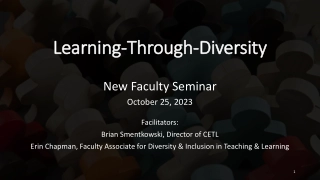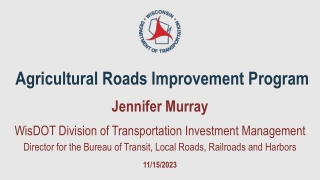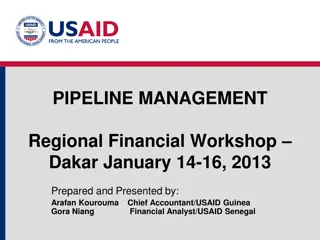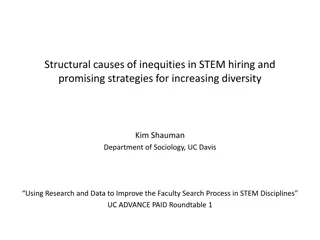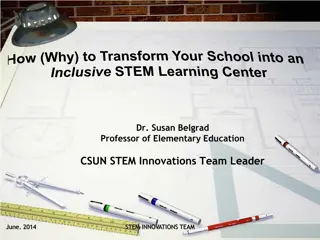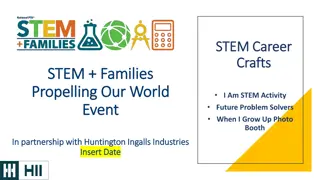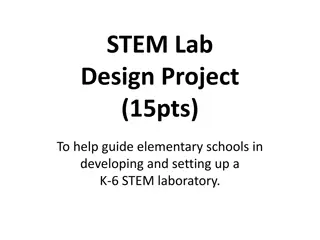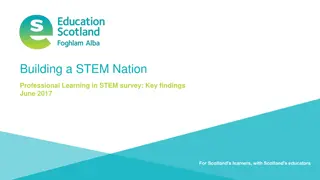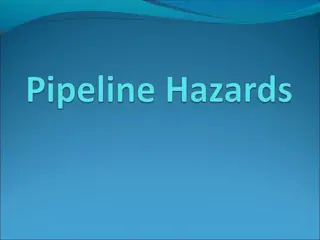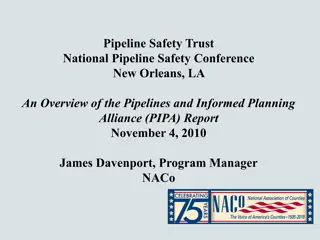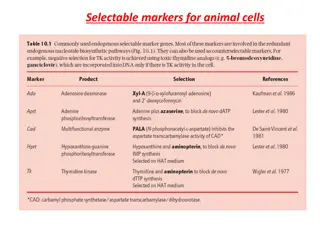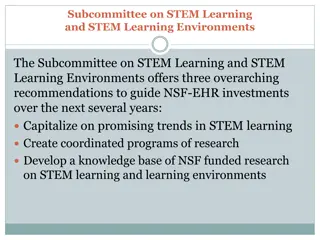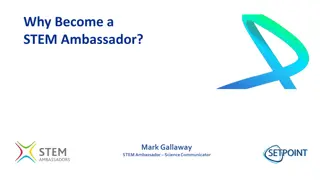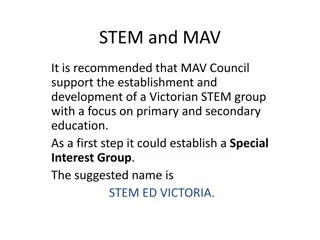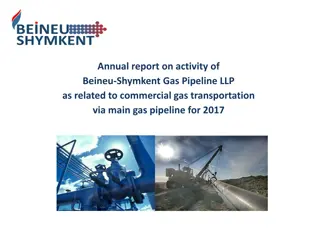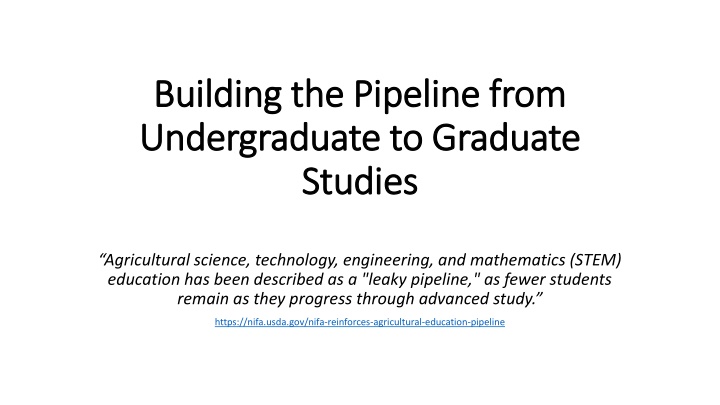
Building the Pipeline in Agricultural STEM Education
The pathway from undergraduate to graduate studies in Agricultural Science, Technology, Engineering, and Mathematics (STEM) faces challenges, leading to a leaky pipeline. Explore programs like Case Study 1 and Case Study 2 that focus on mentoring, building relationships between institutions, and recruiting students to fill this gap.
Uploaded on | 1 Views
Download Presentation

Please find below an Image/Link to download the presentation.
The content on the website is provided AS IS for your information and personal use only. It may not be sold, licensed, or shared on other websites without obtaining consent from the author. If you encounter any issues during the download, it is possible that the publisher has removed the file from their server.
You are allowed to download the files provided on this website for personal or commercial use, subject to the condition that they are used lawfully. All files are the property of their respective owners.
The content on the website is provided AS IS for your information and personal use only. It may not be sold, licensed, or shared on other websites without obtaining consent from the author.
E N D
Presentation Transcript
Building the Pipeline from Building the Pipeline from Undergraduate to Graduate Undergraduate to Graduate Studies Studies Agricultural science, technology, engineering, and mathematics (STEM) education has been described as a "leaky pipeline," as fewer students remain as they progress through advanced study. https://nifa.usda.gov/nifa-reinforces-agricultural-education-pipeline
Case Study 1: Building the Pipeline Programmatic Goal: Develop and strengthen relationships between 1994, 1890, and 1862 institutions in Agriculture and Applied Economics Aim: Create new mentoring networks for UG students from historically under-represented groups Mentees and Mentors: Rising juniors and seniors from 1994 and 1890 institutions Nominate by faculty at their home institution Second faculty member from 1862 institution Create multi-faceted, multi-institutional mentoring team Activities: Research experiences Graduate school application guidance Workshops: research process, graduate school admissions, potential careers Support: Maximum flexibility recognizing the opportunity cost of engaging in research and mentoring activities Conference travel support to participate in experiential panel discussion Stipend ($1200-$1500) for travel, research, or graduate school applications www.joycejchen.com/pipeline
Case Study 2: Pipeline to Graduate Studies Programmatic Goal: West Texas A&M University (WTAMU) recognizes the need for their talented and motivated students to build on their education through graduate studies Partnership: Partnering with Texas A&M University (TAMU) for student opportunities to pursue graduate education in programs that are not offered at WTAMU Presidential initiative to extend program offerings, especially doctoral programs https://walterwendler.com/2018/01/pipelines/ Formal agreements with individual TAMU colleges or programs Mentors: Kimberly Hanna, TAMU Pipeline Coordinator at WTAMU Pipeline Office Identify recruitment opportunities in desired field of study Assist students with admissions materials Connect individual faculty at both institutions Activitites: Flexible process based on student goals TAMU Summer Research Program gets students to campus TAMU faculty recruitment trips to WTAMU https://www.wtamu.edu/academics/graduate- school/pipeline-to-graduate-studies.html
Discussion Do you have programs in your college that build the pipeline by: Partnering with 1890 or 1994 universities or non-LGUs? Mentoring undergraduate students for graduate school? Recruiting from other STEM colleges in your university? Providing financial or programmatic support for research activities?

